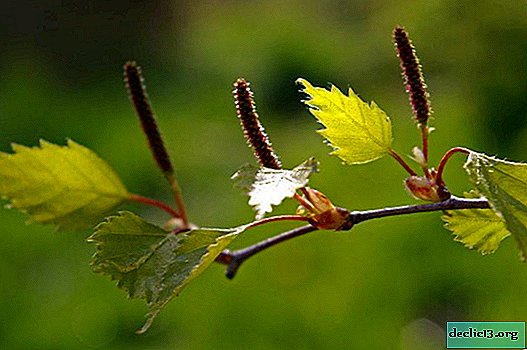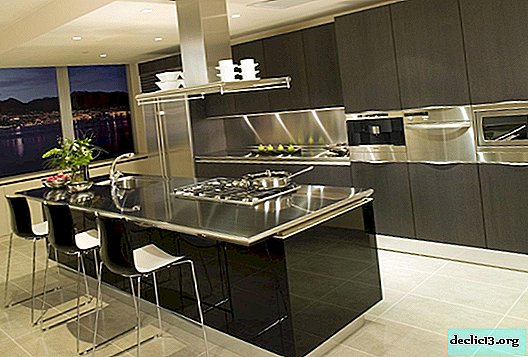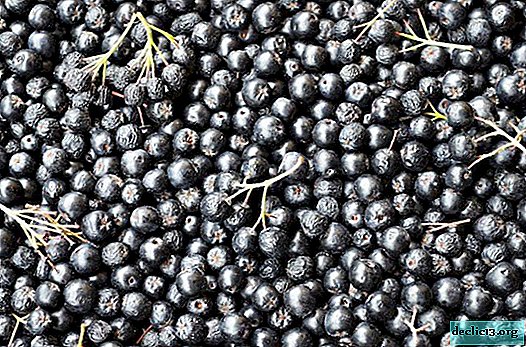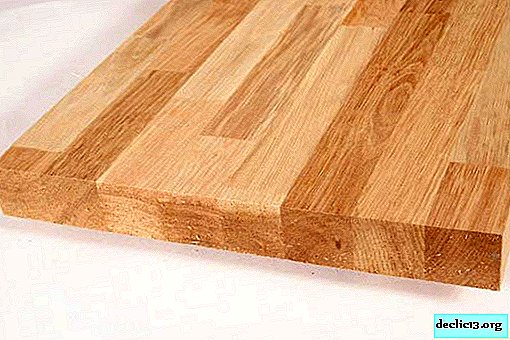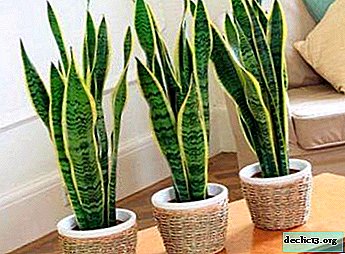How to choose grassy plants for open ground - gray geranium
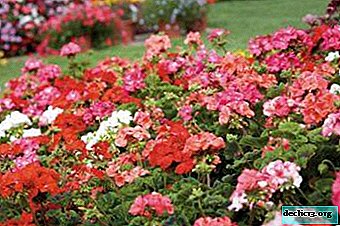
Geranium is often called a plant that is grown in pots on window sills. Confusion occurs, probably because both of them belong to the geranium family, but home pelargonium is its separate genus.
Their main difference is that the pelargonium is thermophilic, and the garden street geranium is frost-resistant and perennial.
This bright unpretentious plant will not only decorate it, but also protect the earth.
Botanical Description and History
Geranium (Geranium) belongs to the family of geranium (Geraniaceae). It is not only a garden crop, but also grows in the wild wherever the climate is temperate. There are about 400 species of geranium, distributed throughout the world.
For example:
- on the coast of the Mediterranean Sea in the highlands on the stony slopes of the mountains grows geranium "Rhizome";
- in the mixed forests of Belarus - “Blood-red” (more about blood-red geraniums can be found here);
- in Central Asia (except deserts), in the Caucasus and southern Europe - “Kholmovaya”;
- in the upper reaches of the Siberian Lena River, in Dauria, the Sayan Mountains and on the coast of Lake Baikal - “Belotsvetkovaya”;
- in Siberia along the Selenga River, in Dauria, on the Vitim and Baikal uplands, as well as along the upper reaches of the Lena - “Geran Vlasov”.
 The homeland of geraniums are the southern regions of England. And most varieties are bred by English and Dutch breeders.
The homeland of geraniums are the southern regions of England. And most varieties are bred by English and Dutch breeders.
Garden geranium is used in landscape design. In addition to decorative flowers and leaves, this perennial herb is resistant to low temperatures and requires minimal maintenance. Therefore, it is popular among many gardeners.
Geranium is a ground cover culture that strengthens the earth with a beautiful carpet due to the fact that its root system develops in breadth, and not in depth. In addition to bright flowering planting of geraniums is useful as a protective action for the earth, preventing soil erosion and drying out.
Description of appearance
The spectacular decorative beauty of geranium consists of factors:
- bright flowers of five petals - from 2.5 to 4.5 cm in diameter;
- flowering carpet of various shades and at different periods depending on the variety;
- the splendor and density of the bush itself;
- its height can be different: up to 50 cm and from 50 cm and above (depending on the type of geranium);
- compact bushes remain decorative until the cold, thanks to the leaves;
- openwork foliage with pointed or rounded edges;
- many types of geraniums are distinguished by pubescent soft-haired leaves.
Popular varieties





Of the 40 species of geranium found in Russia, about 12 species are popular with gardeners. They differ in their characteristics, for example, such:
- plant height;
- colors of flowers;
- photophilousness;
- drought tolerance.
To high (from 50 cm) belong:
- "Swamp" - up to 70 cm.
- "Patricia" - from 80 to 90 cm.
- "Meadow" - up to 1.2 m.
Low (up to 50 cm):
- “Balkan” - 30 cm high.
- "Large-flowered" or "Himalayan" - from 30 to 50 cm.
- "Rosanne" - up to 40 cm.
- "Gorgeous" - 50 cm.
You can choose almost any shade of flowers from the variety of geraniums. For example:
- "Meadow" will bloom in a lilac-blue tone (more about meadow geraniums can be found here, and in more detail about the healing properties of meadow geraniums can be found in this material).
- "Balkan" has purple or reddish flowers about 3 cm in diameter.
- Czakor is red.
- "Swamp" - with medium-sized purple flowers.
- “Gorgeous” - it will surprise you that at first the buds will be light purple, and by the fall they will get a brick tint.
- "Large-flowered" or "Himalayan" - large violet with reddish veins flowers up to five cm in diameter.
- "Georgian" - with purple buds.
- "Blood-red" - with terry, rose-like flowers.
- "Rosanne" - large bright blue inflorescences with a white center.
- “Patricia” - although its flowering cannot be called plentiful, experienced gardeners recommend planting hosts along with “Patricia”.
Photophilia is characteristic of species:
- The Himalayan.
- "Gorgeous" (more about the magnificent geranium, about its planting and care can be found here).
- "Georgian".
- "Renard."
- "Flat-skinned."
- "Large-root".
- "Small stamen."
Shady views:
- "Forest" (more details about forest geranium can be found in this material).
- "Roberta."
- "Red-brown."
Drought tolerant species:
- Ashen.
- "Dalmatian".
- "Large-root".
More information about all varieties and types of garden geraniums can be found here.
Gray

Gray geranium or otherwise - “Renard” (Geranium renardii) is found in nature in the meadows of the Caucasus. it perennial plant with a thick rhizome and weakly branched stemsGreat for outdoor use.
This species is characterized by:
- compact bush up to 45 cm high and up to 50 cm wide;
- gray-green leaves with wavy edges;
- large white flowers with lilac and darker veins;
- flowering in June-July.
Agricultural cultivation
It helps every gardener to properly care for their plantings in the infield and receive abundant flowering.
Reference.Agricultural technology includes soil preparation, fertilizing, selection of planting material, sowing or planting, and subsequent care.Where and how to plant her? Rules and advice, instructions
 Before boarding, you must:
Before boarding, you must:
- determine landing time;
- pick a place on the site;
- choose planting material;
- prepare the ground.
Planted garden geraniums in autumn or spring, when the earth warms up to 15-18 degrees of heat. The landing site is selected in accordance with the characteristics of the type of planting material. For example, if gray geranium is photophilous, then it should grow in a sunny area. Since it has low bushes, they plant it along garden paths, curbs, in rocky gardens.
Garden perennial geraniums are planted with islands (when there are several bushes nearby) at a distance between islands of up to 30 cm.
As planting material, you can use:
- parts of the rhizome;
- seedlings;
- seeds.
After planting in the soil, the plant should be abundantly watered. Then mulch the earth around the seedling.
Important! Mulching (dusting with dry peat, compost, bark or wood chips) is done to avoid drying out of the soil.You can find out more about planting and caring for garden geraniums here.
Lighting and location
Gray geranium grows well on sunny slopes and near shrubs in partial shade.
Soil requirements
Soil preparation :
- loose soil is preferred;
- moderately moist and without stagnation of water;
- geranium loves slightly alkaline or neutral loam;
- when digging, rotted compost and peat are introduced;
- landing pits are made deeper than the longest root by 15-20 cm;
- at the bottom - necessarily drainage (crushed stone, broken brick) from stagnation of water;
- pour a mixture of peat and sand on top of the drain.
How to care?
Though geranium is considered an unpretentious plant, but minimal care is still required. It includes:
- watering;
- top dressing;
- pruning.
Watering
Watering geraniums is necessary systematic, but moderate. Drying and waterlogging should be avoided, as its roots rot in stagnant water. Better watering it is not enough than pouring it. Mulching will help the earth not dry longer.
Watch a video on proper watering.
Top dressing
For geranium, compost or peat added to the planting hole is enough, but for more lush and longer flowering, you can use phosphorus fertilizers (even before flowering), and during the formation of inflorescences and during flowering, feed the geranium with potash fertilizers every 2 weeks.
Pruning
Why is it necessary:
- to ensure the density of the bush and give it a more decorative look;
- to protect healthy shoots and leaves from gray rot (Botrytis cinerea Pers fungus).
Common Diseases and Pests
For health, geraniums are essential three conditions:
 so that the root system is not in stagnant water;
so that the root system is not in stagnant water;- air temperature not higher than 25 degrees of heat;
- lighting in accordance with the type of geranium.
 leaves turn yellow from an excess of moisture;
leaves turn yellow from an excess of moisture;- stems are exposed (usually from below) if there is not enough light;
- brown spots appear - gray rot when infected with Botrytis fungus.
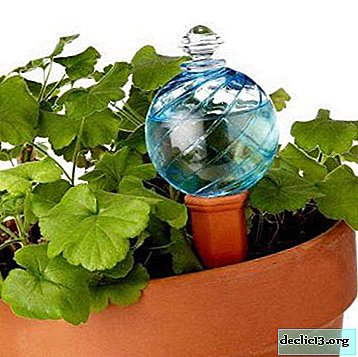 clear the soil of weeds;
clear the soil of weeds;- remove the affected parts of the plant;
- watering is carried out until 11 a.m.;
- treat geranium with fungicides.
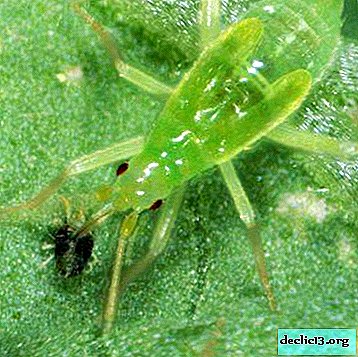 aphid;
aphid;- whitefly;
- various ticks;
- caterpillars.
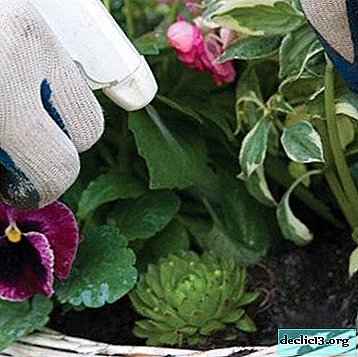 Biological insecticides are used against aphids and whitefly ticks, re-processing after a week.
Biological insecticides are used against aphids and whitefly ticks, re-processing after a week.- It is recommended to collect caterpillars from plants manually.
- rhizome;
- seeds;
- cuttings.
- If in water, you must:
- place them in an opaque container with water (to provide the roots with darkness);
- keep the container in a warm room for 2-3 weeks;
- change water every 3 days;
- when the roots appear, plant in the ground.
- If rooting in the ground, you must:
- make drainage at the bottom of the landing recess;
- on top - soil from three parts of peat, one part of perlite and the addition of compost with the ground;
- after planting a seedling, slightly compact the soil;
- pour to a slightly wet state;
- sprinkle soil with organic mulch (wood chips, bark).
Failure to comply leads to plant diseases:
For treatment it is necessary:
Geranium is often affected by such pests.:
Fight with them:
Propagation Features
To propagate geraniums use:
Rhizome
 Dug up the rhizome of an adult plant is divided into parts and immediately planted in the ground or they can be stored until spring in a container of sand in a cool place.
Dug up the rhizome of an adult plant is divided into parts and immediately planted in the ground or they can be stored until spring in a container of sand in a cool place.
Seeds
 Garden geranium seeds are rarely propagated. It is believed that this is a method for experienced gardeners. But the main reason is that seedlings grown from seeds bloom only the next year.
Garden geranium seeds are rarely propagated. It is believed that this is a method for experienced gardeners. But the main reason is that seedlings grown from seeds bloom only the next year.
Vegetative
 Cuttings are cut up to 10 cm long, slices are dried for two hours. You can root cuttings in water and immediately in the ground.
Cuttings are cut up to 10 cm long, slices are dried for two hours. You can root cuttings in water and immediately in the ground.
The roots should appear in three to four weeks.
Watch the video about geranium cuttings.
Garden geranium will suit absolutely any site. The variety of its species with different requirements for lighting and place of use allows gardeners to choose the type of geranium for a particular garden.

 so that the root system is not in stagnant water;
so that the root system is not in stagnant water; leaves turn yellow from an excess of moisture;
leaves turn yellow from an excess of moisture; clear the soil of weeds;
clear the soil of weeds; aphid;
aphid; Biological insecticides are used against aphids and whitefly ticks, re-processing after a week.
Biological insecticides are used against aphids and whitefly ticks, re-processing after a week.